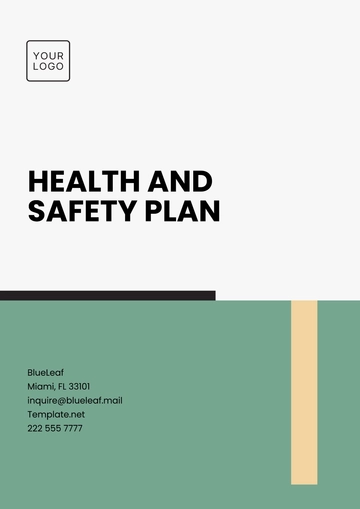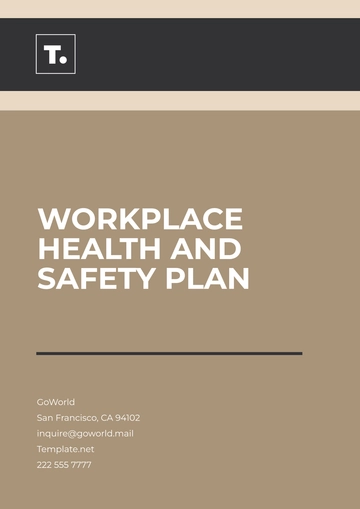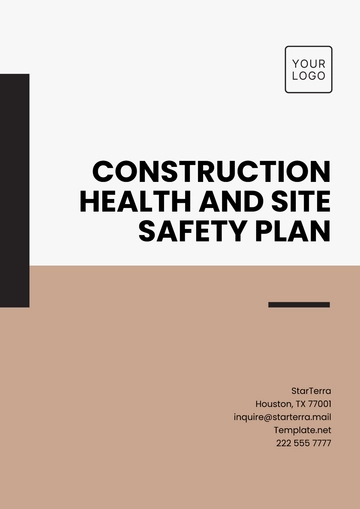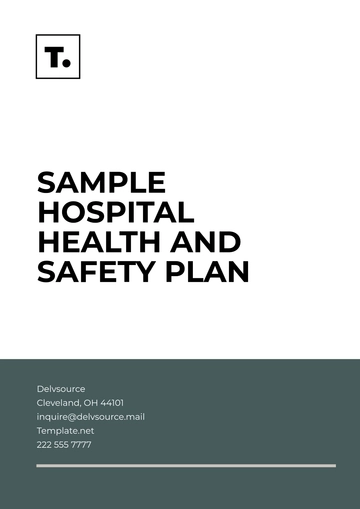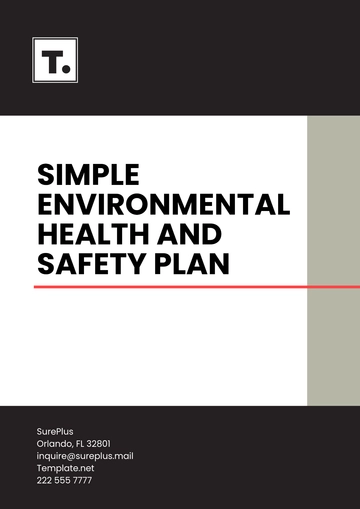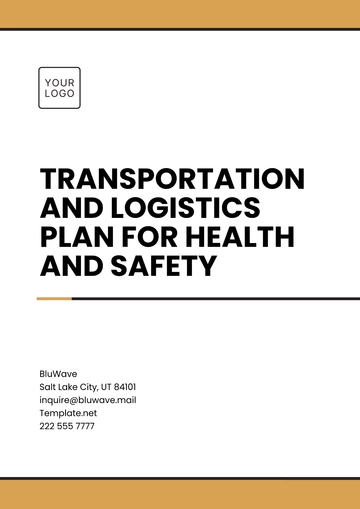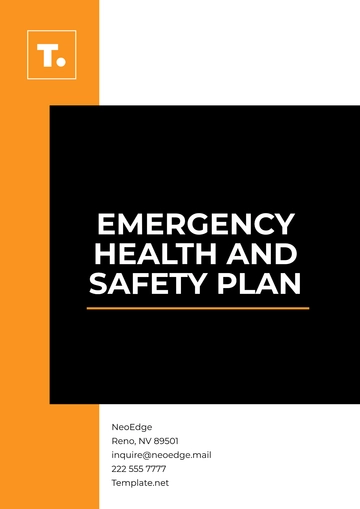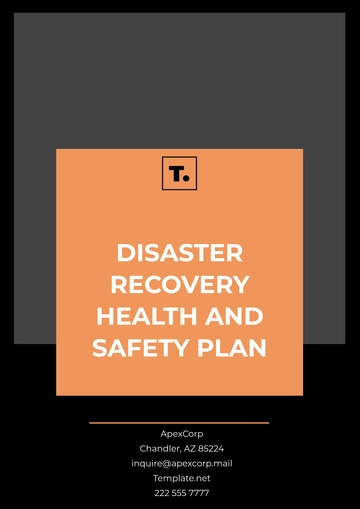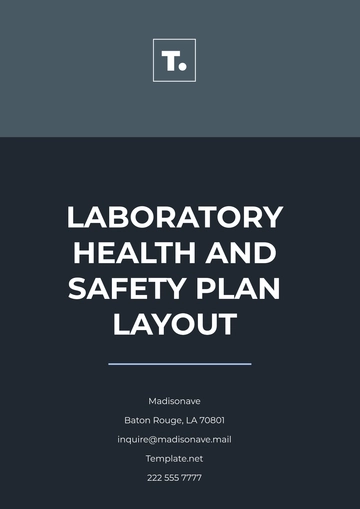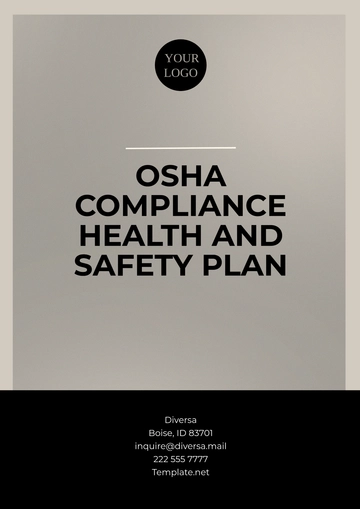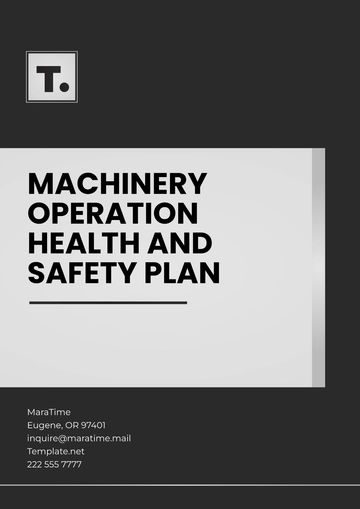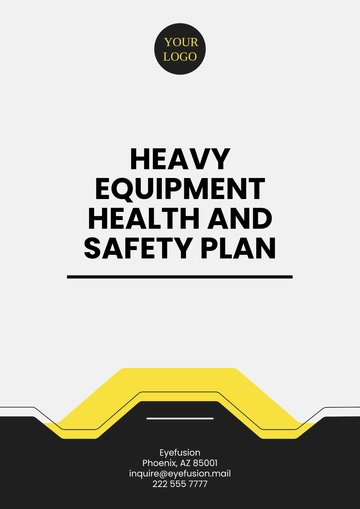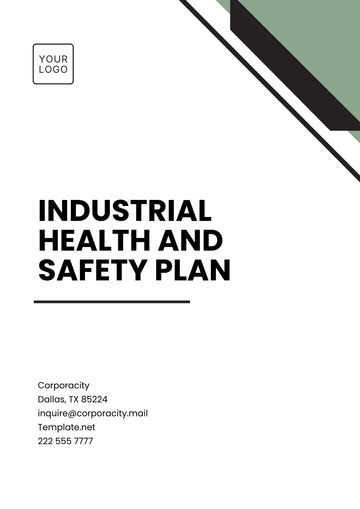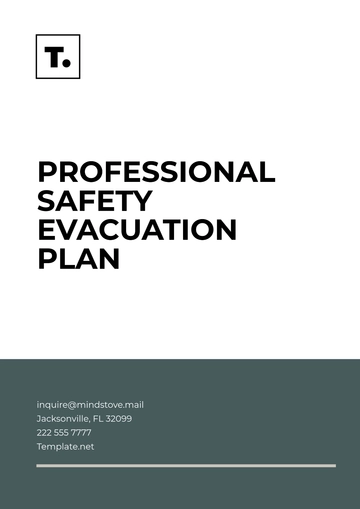Free Fire Safety Plan for Sites
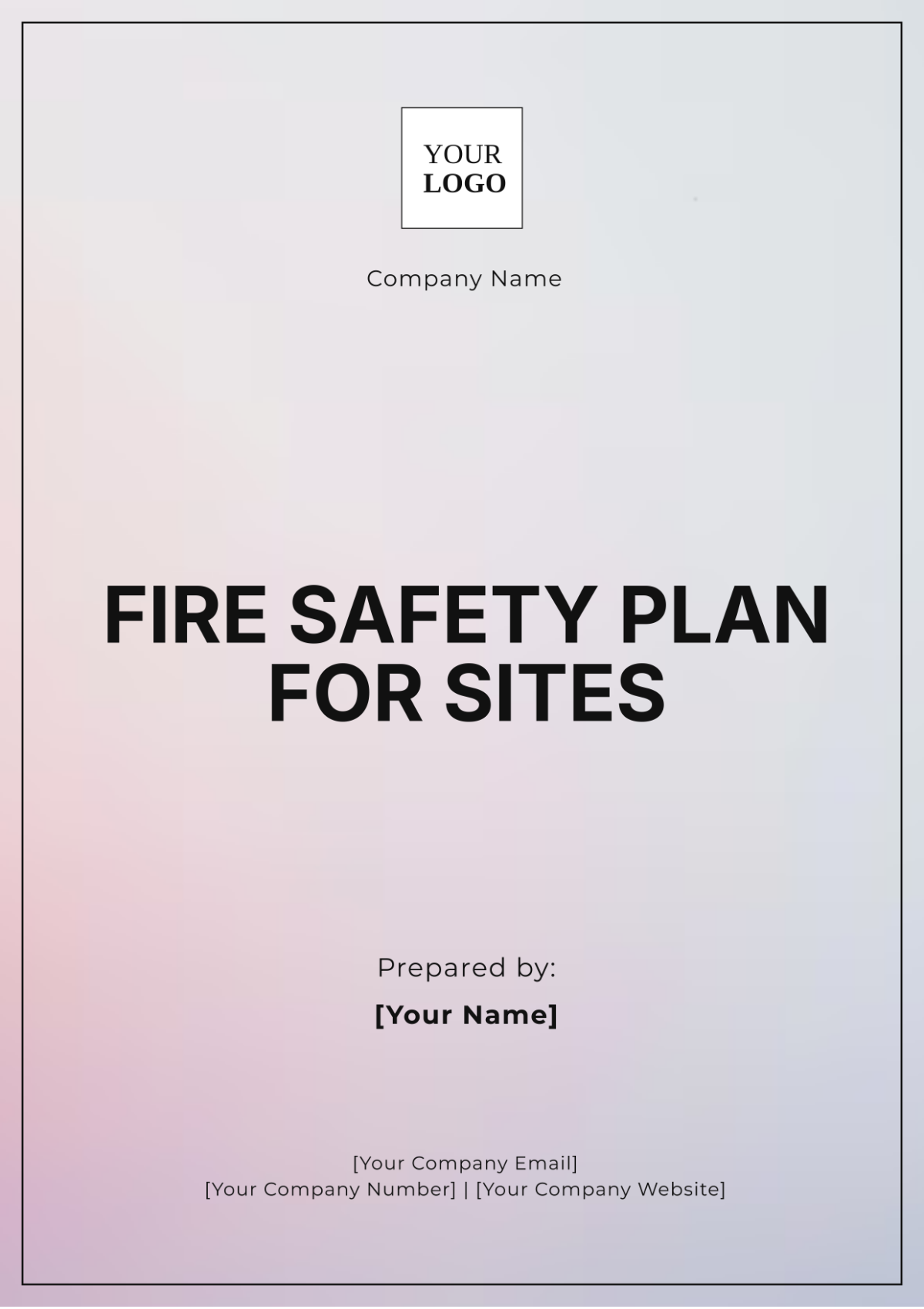
Prepared By: [Your Name]
Company: [Your Company Name]
1. Introduction
A comprehensive fire safety plan is essential for ensuring the safety of personnel, visitors, and property at any site. This plan outlines the strategies, procedures, and resources necessary to prevent, respond to, and recover from fire emergencies. All staff members need to be familiar with this plan to ensure an effective response in case of a fire incident.
2. Objectives
The primary objectives of this fire safety plan include:
Preventing Fires: Implementing measures to reduce the risk of fire incidents.
Emergency Response: Establishing protocols for a swift and efficient response to fire emergencies.
Training and Drills: Ensuring all staff are trained and regularly drilled in fire safety procedures.
Compliance: Meeting all legal and regulatory requirements concerning fire safety.
3. Fire Risk Assessment
Conduct a thorough fire risk assessment to identify potential fire hazards, evaluate risks, and implement controls. This assessment should include:
Identification of Fire Hazards: Evaluate sources of ignition (e.g., electrical equipment, heating systems) and combustible materials (e.g., flammable liquids, paper products).
Assessment of Existing Controls: Review current fire safety measures, including smoke detectors, fire alarms, and suppression systems.
Evaluation of Fire Risks: Determine the likelihood and potential consequences of a fire incident.
4. Preventative Measures
Implement the following preventative measures to minimize fire risks:
Regular Maintenance: Schedule routine maintenance and inspections of electrical systems, heating equipment, and fire safety equipment.
Proper Storage: Store flammable materials in designated areas away from heat sources and ensure proper labeling.
Housekeeping Practices: Maintain a clean environment to reduce clutter and the accumulation of combustible materials.
Emergency Exits: Ensure all emergency exits are clearly marked, unobstructed, and regularly inspected.
5. Emergency Response Procedures
In the event of a fire, follow these emergency response procedures:
Raise the Alarm: Activate the nearest fire alarm pull station and alert all personnel.
Evacuate the Premises: Direct all personnel to the nearest exit and follow established evacuation routes. Avoid using elevators.
Account for Personnel: Once outside, conduct a headcount to ensure all personnel are accounted for at a designated assembly point.
Notify Emergency Services: Call the local fire department or emergency services, providing them with details about the fire and any relevant information.
Do Not Re-enter: Ensure that no one re-enters the building until it has been declared safe by emergency services.
6. Training and Drills
Regular training and drills are crucial for preparing staff to respond effectively to fire emergencies. Key components include:
Fire Safety Training: Conduct training sessions for all staff on fire prevention, emergency procedures, and the proper use of fire extinguishers.
Fire Drills: Schedule and conduct fire drills at least twice a year to familiarize staff with evacuation routes and procedures.
Review of Procedures: Regularly review and update fire safety procedures and ensure all personnel are informed of any changes.
7. Fire Safety Equipment
Ensure the following fire safety equipment is available and well-maintained:
Fire Extinguishers: Install and maintain appropriate fire extinguishers throughout the site, ensuring they are easily accessible.
Smoke Detectors: Install smoke detectors in strategic locations and test them regularly.
Sprinkler Systems: Ensure sprinkler systems are installed and operational, as required by local regulations.
Emergency Lighting: Install emergency lighting in exit routes to guide personnel during an evacuation.
8. Record Keeping
Maintain thorough records related to fire safety, including:
Fire Risk Assessments: Document all risk assessments and any actions taken to mitigate identified hazards.
Training Records: Keep records of all training sessions and participant attendance.
Inspection Reports: Maintain records of equipment inspections and maintenance activities.
9. Conclusion
A well-defined fire safety plan is crucial for protecting lives and property at any site. By implementing preventative measures, establishing clear emergency response procedures, and ensuring regular training and maintenance, organizations can significantly reduce the risk of fire and enhance safety for everyone involved. Regular reviews and updates to the fire safety plan will ensure continued compliance with regulations and the effectiveness of safety measures.
- 100% Customizable, free editor
- Access 1 Million+ Templates, photo’s & graphics
- Download or share as a template
- Click and replace photos, graphics, text, backgrounds
- Resize, crop, AI write & more
- Access advanced editor
Ensure comprehensive fire safety at your sites with the Fire Safety Plan for Sites Template from Template.net. This editable and customizable template is designed to address the unique fire safety requirements for various environments. Tailor the content to suit your specific protocols and compliance standards effortlessly. With its user-friendly layout and detailed guidelines, you can effectively communicate essential fire safety measures, protecting both your team and property.
You may also like
- Finance Plan
- Construction Plan
- Sales Plan
- Development Plan
- Career Plan
- Budget Plan
- HR Plan
- Education Plan
- Transition Plan
- Work Plan
- Training Plan
- Communication Plan
- Operation Plan
- Health And Safety Plan
- Strategy Plan
- Professional Development Plan
- Advertising Plan
- Risk Management Plan
- Restaurant Plan
- School Plan
- Nursing Home Patient Care Plan
- Nursing Care Plan
- Plan Event
- Startup Plan
- Social Media Plan
- Staffing Plan
- Annual Plan
- Content Plan
- Payment Plan
- Implementation Plan
- Hotel Plan
- Workout Plan
- Accounting Plan
- Campaign Plan
- Essay Plan
- 30 60 90 Day Plan
- Research Plan
- Recruitment Plan
- 90 Day Plan
- Quarterly Plan
- Emergency Plan
- 5 Year Plan
- Gym Plan
- Personal Plan
- IT and Software Plan
- Treatment Plan
- Real Estate Plan
- Law Firm Plan
- Healthcare Plan
- Improvement Plan
- Media Plan
- 5 Year Business Plan
- Learning Plan
- Marketing Campaign Plan
- Travel Agency Plan
- Cleaning Services Plan
- Interior Design Plan
- Performance Plan
- PR Plan
- Birth Plan
- Life Plan
- SEO Plan
- Disaster Recovery Plan
- Continuity Plan
- Launch Plan
- Legal Plan
- Behavior Plan
- Performance Improvement Plan
- Salon Plan
- Security Plan
- Security Management Plan
- Employee Development Plan
- Quality Plan
- Service Improvement Plan
- Growth Plan
- Incident Response Plan
- Basketball Plan
- Emergency Action Plan
- Product Launch Plan
- Spa Plan
- Employee Training Plan
- Data Analysis Plan
- Employee Action Plan
- Territory Plan
- Audit Plan
- Classroom Plan
- Activity Plan
- Parenting Plan
- Care Plan
- Project Execution Plan
- Exercise Plan
- Internship Plan
- Software Development Plan
- Continuous Improvement Plan
- Leave Plan
- 90 Day Sales Plan
- Advertising Agency Plan
- Employee Transition Plan
- Smart Action Plan
- Workplace Safety Plan
- Behavior Change Plan
- Contingency Plan
- Continuity of Operations Plan
- Health Plan
- Quality Control Plan
- Self Plan
- Sports Development Plan
- Change Management Plan
- Ecommerce Plan
- Personal Financial Plan
- Process Improvement Plan
- 30-60-90 Day Sales Plan
- Crisis Management Plan
- Engagement Plan
- Execution Plan
- Pandemic Plan
- Quality Assurance Plan
- Service Continuity Plan
- Agile Project Plan
- Fundraising Plan
- Job Transition Plan
- Asset Maintenance Plan
- Maintenance Plan
- Software Test Plan
- Staff Training and Development Plan
- 3 Year Plan
- Brand Activation Plan
- Release Plan
- Resource Plan
- Risk Mitigation Plan
- Teacher Plan
- 30 60 90 Day Plan for New Manager
- Food Safety Plan
- Food Truck Plan
- Hiring Plan
- Quality Management Plan
- Wellness Plan
- Behavior Intervention Plan
- Bonus Plan
- Investment Plan
- Maternity Leave Plan
- Pandemic Response Plan
- Succession Planning
- Coaching Plan
- Configuration Management Plan
- Remote Work Plan
- Self Care Plan
- Teaching Plan
- 100-Day Plan
- HACCP Plan
- Student Plan
- Sustainability Plan
- 30 60 90 Day Plan for Interview
- Access Plan
- Site Specific Safety Plan
